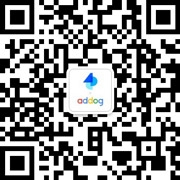本案例默认翻译为中文,点击可切换回原语言
已切换成原语言,点击可翻译成中文
Tommy Hilfiger自适应
案例简介:对质疑的解释 (30% 投票) 我们每天都穿衣服。通常很轻松。 对于残疾人 (pwd),拉链和纽扣等简单的闭合方式以及狭窄的领口或裤腿使独立的着装变得痛苦,即使不是不可能的。 尽管有8万亿美元的消费能力和被推销的愿望,就像任何其他消费群体一样,残疾人被时尚界忽视了。 我们在Tommy Hilfiger的客户感到困扰的是,他们意识到他们正在抛弃一整群人-这与他们作为时尚创新者的身份背道而驰。他们成立了一个小型工作组来调查这个机会。 最初是一个小的激情项目,很快就变得更加复杂,他们向我们提出了一个问题: 我们该怎么做? 他们想建立一个适应性的业务,但不确定从哪里开始或如何开始。 他们需要一个创新的创意合作伙伴来实现这一目标。 挑战是双重的: 首先,我们需要 “调整” 衣服,以便pwd可以穿它们。但是,我们需要开展一项运动来建立意识和熟悉度。我们所有的工作都必须符合汤米的精神。但它也需要在很小的预算上突破混乱。 洞察力/突破性思维 (投票30%) 作为一名创新者承担着巨大的风险。我们被警告说,错误地进行自适应发射可能比根本不这样做更糟糕。汤米没有人想要一个 “百事可乐时刻”。 当我们从残疾的角度看待我们的营销挑战时,我们看到了我们面前有多少工作要做: 如果我们重新设计衣服,我们需要修复广告-所以pwd可以看到它 如果我们修复了广告,我们就必须修复网站-这样pwd才能阅读它 如果我们修复了网站,我们必须修复订购流程-这样pwd才能购买 如果我们固定订购流程,我们必须修复运输-所以PWDs可以打开它 如果我们固定运输,我们必须修复客户服务-所以PWDs可以退货 等等。 我们的Tommy客户同意我们对端到端包容性的承诺,并全力以赴。 从那时起,“没有我们就没有我们” 这句话成为我们的口头禅。我们必须不断与pwd合作。我们建立了一个专有的在线研究平台,在全球拥有1500名员工。 我们包括更多的人,我们的努力变得更具创新性。这是包容性设计的核心原则。 创造性的想法 (投票20%) 我们想庆祝并使这项基本人权能够自我表达。 我们也会做双重任务。虽然大多数品牌可能会选择开发自适应产品或将残疾人纳入其广告,但我们将尝试两者。 我们设计了时尚史上最具包容性的活动,从我们的盲人导演James Rath开始,以及将残疾个人经验带入拍摄的工作人员。我们通过组织工作,以激情而不是残疾来塑造人们。 我们的剧本被录制下来,然后很快就被扔掉了,因为我们的演员为自己说话比我们为他们说话更好。 与大多数广告不同,我们所有的内容都可以通过隐藏式字幕和音频描述完全访问。为了帮助在线购物者,我们开发了一个一流的网站,以降低风险并增加乐趣。没有细节被忽视,从经过专门培训的客户服务到塑料袋包装,便于交货和退货。 结果/结果 (投票20%) 我们建立的反馈回路对营销漏斗的每一步都产生了巨大的影响: 七项新的服装创新,销售额超过100万美元。 709次新闻印象,20.3m次社交印象,2倍行业平均点击率。 适应性顾客交叉购物的44% (购买适应性和非适应性物品)。大多数家庭对Tommy品牌来说都是全新的。 beyon与梅西百货和亚马逊的分销d Tommy.com增加。 该活动在残疾人中取得了商业上的成功。 三分之一的客户服务电话说: “谢谢。 更重要的是,最近的一项量化研究显示,3分之2的非残疾消费者在看到我们的工作后三天内采取了行动-告诉朋友,访问网站和/或购买衣服。 Tommy Hilfiger一直受到乐观和时尚民主化的驱使。我们现在已经为这些价值观找到了新的目标,加强了我们对所有人自我表达的承诺。 评审团的文化/背景信息 (150字) 关于Tommy Hilfiger品牌: Tommy Hilfiger品牌在美国并不像在世界其他地方那样强大。销售集中在工厂直销店和低价渠道,媒体支出较低。 关于PWD消费能力: Pwd是美国最大的服务不足市场,消费能力估计为650亿美元,与美国西班牙裔市场相似。 作为比较,美国大码市场目前估计为21B美元。 BCG有大小适应性服装的机会保守地在 $ 5-7B。 Pwd约占在线总支出的10% %。在线购物消除了残疾人面临的一些挑战,但实际上只有少数网站可以访问。即使是像亚马逊这样的庞然大物也尚未达到我们为工作设定的标准。
Tommy Hilfiger自适应
案例简介:The Interpretation of the Challenge (30% of vote ) We all get dressed every day. Usually with ease. For people with disabilities (PWDs), simple closures like zippers and buttons, and narrow necklines or pant legs make independent dressing torturous, if not impossible. Despite $8T in spending power and a desire to be marketed to, just like any other consumer group, people with disabilities are ignored by the fashion industry. Our clients at Tommy Hilfiger were troubled by the realization they were leaving out an entire group of people - counter to their identity as fashion innovators. They established a small task force to investigate the opportunity. What started as a small passion project quickly became something more complex, and they came to us with a question: How do we do it? They wanted to build an adaptive business but were unsure where or how to start. And they needed an innovative creative partner to make it happen. The challenge was twofold: First, we’d need to ‘adapt’ the clothes, so PWDs could wear them. But then we’d need to develop a campaign to build awareness and familiarity. All of our work had to match the Tommy ethos. But it also needed to break through the clutter on a tiny budget. The Insight / Breakthrough Thinking (30% of vote ) Being an innovator carried tremendous risk. We were warned that getting an adaptive launch wrong could be worse than not doing it at all. And no one at Tommy wanted a “Pepsi moment.” When we viewed our marketing challenge through the lens of disability, we saw how much work was ahead of us: If we redesigned clothes we’d need to fix advertising - so PWDs could see it If we fixed advertising we’d have to fix site - so PWDs could read it If we fixed site, we’d have to fix ordering process - so PWDs could buy it If we fixed ordering process we’d have to fix shipping - so PWDs could open it If we fixed shipping we’d have to fix customer service - so PWDs could return it And so on. Our Tommy clients agreed with our commitment to end-to-end inclusivity and went all in. From then on, the phrase “Nothing for us without us” became our mantra. We’d have to work with PWDs continuously. We established a proprietary online research platform, with 1500 people globally. We included more people, and our efforts became more innovative. This is the core principle of inclusive design. The Creative Idea (20% of vote ) We wanted to celebrate and enable this fundamental human right to self-expression. We’d also be doing double-duty. While most brands might choose to EITHER develop adaptive products OR include people with disabilities in their advertising, we were going to try both. We designed the most inclusive campaign in fashion history, starting with James Rath, our blind director, and a crew who brought personal experience with disability to the shoot. We worked through organizations to cast people by passion, not by disability. Our script was recorded then quickly thrown away, because our cast spoke for themselves better than we ever could speak for them. Unlike most advertising, all our content is totally accessible via closed captioning and audio descriptions. To help online shoppers, we developed a best-in-class site to reduce risk and add delight. No detail was overlooked, from specially trained customer service to poly-bag packaging for easy delivery and returns. The Outcome / Results (20% of vote) The feedback loop we built had tremendous impact at every step in the marketing funnel: Seven new clothing innovations, over $1M sales. 709M press impressions, 20.3M social impressions to date, 2x industry average click through rates. 44% of Adaptive customers cross-shopping (buying both adaptive and non-adaptive items). Most households are entirely new to the Tommy brand. Increased distribution beyond Tommy.com with Macy’s and Amazon. The campaign was a commercial success among PWDs. One-third of calls to customer service were to say, “Thank you.” What’s more, a recent quant study revealed that two-thirds of non-disabled consumers who saw our work took action within three days of exposure - telling friends, visiting the site, and/or buying clothes. Tommy Hilfiger has always been driven by optimism and the democratization of fashion. We’ve now found a new purpose for those values, strengthening our commitment to self-expression for all. Cultural/Context Information for the Jury (150 words) About The Tommy Hilfiger Brand: The Tommy Hilfiger brand is not as strong in the US as it is in the rest of the world. Sales are concentrated in the factory outlet and off-price channels and media spending is low. About PWD Spending Power: PWDs are the largest underserved market in the US, with spending power estimated at $65B, similar to the US Hispanic market. As a point of comparison, the US market for plus-size now estimated at $21B. BCG has sized the opportunity for adaptive clothing conservatively at $5-7B. And PWDs represent about 10% of total online spending. Online shopping eliminates some of the challenges faced by individuals with disabilities, but only a few websites are actually accessible. Even behemoths like Amazon have yet to reach the standards we set with our work.
Tommy Hilfiger Adaptive
案例简介:对质疑的解释 (30% 投票) 我们每天都穿衣服。通常很轻松。 对于残疾人 (pwd),拉链和纽扣等简单的闭合方式以及狭窄的领口或裤腿使独立的着装变得痛苦,即使不是不可能的。 尽管有8万亿美元的消费能力和被推销的愿望,就像任何其他消费群体一样,残疾人被时尚界忽视了。 我们在Tommy Hilfiger的客户感到困扰的是,他们意识到他们正在抛弃一整群人-这与他们作为时尚创新者的身份背道而驰。他们成立了一个小型工作组来调查这个机会。 最初是一个小的激情项目,很快就变得更加复杂,他们向我们提出了一个问题: 我们该怎么做? 他们想建立一个适应性的业务,但不确定从哪里开始或如何开始。 他们需要一个创新的创意合作伙伴来实现这一目标。 挑战是双重的: 首先,我们需要 “调整” 衣服,以便pwd可以穿它们。但是,我们需要开展一项运动来建立意识和熟悉度。我们所有的工作都必须符合汤米的精神。但它也需要在很小的预算上突破混乱。 洞察力/突破性思维 (投票30%) 作为一名创新者承担着巨大的风险。我们被警告说,错误地进行自适应发射可能比根本不这样做更糟糕。汤米没有人想要一个 “百事可乐时刻”。 当我们从残疾的角度看待我们的营销挑战时,我们看到了我们面前有多少工作要做: 如果我们重新设计衣服,我们需要修复广告-所以pwd可以看到它 如果我们修复了广告,我们就必须修复网站-这样pwd才能阅读它 如果我们修复了网站,我们必须修复订购流程-这样pwd才能购买 如果我们固定订购流程,我们必须修复运输-所以PWDs可以打开它 如果我们固定运输,我们必须修复客户服务-所以PWDs可以退货 等等。 我们的Tommy客户同意我们对端到端包容性的承诺,并全力以赴。 从那时起,“没有我们就没有我们” 这句话成为我们的口头禅。我们必须不断与pwd合作。我们建立了一个专有的在线研究平台,在全球拥有1500名员工。 我们包括更多的人,我们的努力变得更具创新性。这是包容性设计的核心原则。 创造性的想法 (投票20%) 我们想庆祝并使这项基本人权能够自我表达。 我们也会做双重任务。虽然大多数品牌可能会选择开发自适应产品或将残疾人纳入其广告,但我们将尝试两者。 我们设计了时尚史上最具包容性的活动,从我们的盲人导演James Rath开始,以及将残疾个人经验带入拍摄的工作人员。我们通过组织工作,以激情而不是残疾来塑造人们。 我们的剧本被录制下来,然后很快就被扔掉了,因为我们的演员为自己说话比我们为他们说话更好。 与大多数广告不同,我们所有的内容都可以通过隐藏式字幕和音频描述完全访问。为了帮助在线购物者,我们开发了一个一流的网站,以降低风险并增加乐趣。没有细节被忽视,从经过专门培训的客户服务到塑料袋包装,便于交货和退货。 结果/结果 (投票20%) 我们建立的反馈回路对营销漏斗的每一步都产生了巨大的影响: 七项新的服装创新,销售额超过100万美元。 709次新闻印象,20.3m次社交印象,2倍行业平均点击率。 适应性顾客交叉购物的44% (购买适应性和非适应性物品)。大多数家庭对Tommy品牌来说都是全新的。 beyon与梅西百货和亚马逊的分销d Tommy.com增加。 该活动在残疾人中取得了商业上的成功。 三分之一的客户服务电话说: “谢谢。 更重要的是,最近的一项量化研究显示,3分之2的非残疾消费者在看到我们的工作后三天内采取了行动-告诉朋友,访问网站和/或购买衣服。 Tommy Hilfiger一直受到乐观和时尚民主化的驱使。我们现在已经为这些价值观找到了新的目标,加强了我们对所有人自我表达的承诺。 评审团的文化/背景信息 (150字) 关于Tommy Hilfiger品牌: Tommy Hilfiger品牌在美国并不像在世界其他地方那样强大。销售集中在工厂直销店和低价渠道,媒体支出较低。 关于PWD消费能力: Pwd是美国最大的服务不足市场,消费能力估计为650亿美元,与美国西班牙裔市场相似。 作为比较,美国大码市场目前估计为21B美元。 BCG有大小适应性服装的机会保守地在 $ 5-7B。 Pwd约占在线总支出的10% %。在线购物消除了残疾人面临的一些挑战,但实际上只有少数网站可以访问。即使是像亚马逊这样的庞然大物也尚未达到我们为工作设定的标准。
Tommy Hilfiger Adaptive
案例简介:The Interpretation of the Challenge (30% of vote ) We all get dressed every day. Usually with ease. For people with disabilities (PWDs), simple closures like zippers and buttons, and narrow necklines or pant legs make independent dressing torturous, if not impossible. Despite $8T in spending power and a desire to be marketed to, just like any other consumer group, people with disabilities are ignored by the fashion industry. Our clients at Tommy Hilfiger were troubled by the realization they were leaving out an entire group of people - counter to their identity as fashion innovators. They established a small task force to investigate the opportunity. What started as a small passion project quickly became something more complex, and they came to us with a question: How do we do it? They wanted to build an adaptive business but were unsure where or how to start. And they needed an innovative creative partner to make it happen. The challenge was twofold: First, we’d need to ‘adapt’ the clothes, so PWDs could wear them. But then we’d need to develop a campaign to build awareness and familiarity. All of our work had to match the Tommy ethos. But it also needed to break through the clutter on a tiny budget. The Insight / Breakthrough Thinking (30% of vote ) Being an innovator carried tremendous risk. We were warned that getting an adaptive launch wrong could be worse than not doing it at all. And no one at Tommy wanted a “Pepsi moment.” When we viewed our marketing challenge through the lens of disability, we saw how much work was ahead of us: If we redesigned clothes we’d need to fix advertising - so PWDs could see it If we fixed advertising we’d have to fix site - so PWDs could read it If we fixed site, we’d have to fix ordering process - so PWDs could buy it If we fixed ordering process we’d have to fix shipping - so PWDs could open it If we fixed shipping we’d have to fix customer service - so PWDs could return it And so on. Our Tommy clients agreed with our commitment to end-to-end inclusivity and went all in. From then on, the phrase “Nothing for us without us” became our mantra. We’d have to work with PWDs continuously. We established a proprietary online research platform, with 1500 people globally. We included more people, and our efforts became more innovative. This is the core principle of inclusive design. The Creative Idea (20% of vote ) We wanted to celebrate and enable this fundamental human right to self-expression. We’d also be doing double-duty. While most brands might choose to EITHER develop adaptive products OR include people with disabilities in their advertising, we were going to try both. We designed the most inclusive campaign in fashion history, starting with James Rath, our blind director, and a crew who brought personal experience with disability to the shoot. We worked through organizations to cast people by passion, not by disability. Our script was recorded then quickly thrown away, because our cast spoke for themselves better than we ever could speak for them. Unlike most advertising, all our content is totally accessible via closed captioning and audio descriptions. To help online shoppers, we developed a best-in-class site to reduce risk and add delight. No detail was overlooked, from specially trained customer service to poly-bag packaging for easy delivery and returns. The Outcome / Results (20% of vote) The feedback loop we built had tremendous impact at every step in the marketing funnel: Seven new clothing innovations, over $1M sales. 709M press impressions, 20.3M social impressions to date, 2x industry average click through rates. 44% of Adaptive customers cross-shopping (buying both adaptive and non-adaptive items). Most households are entirely new to the Tommy brand. Increased distribution beyond Tommy.com with Macy’s and Amazon. The campaign was a commercial success among PWDs. One-third of calls to customer service were to say, “Thank you.” What’s more, a recent quant study revealed that two-thirds of non-disabled consumers who saw our work took action within three days of exposure - telling friends, visiting the site, and/or buying clothes. Tommy Hilfiger has always been driven by optimism and the democratization of fashion. We’ve now found a new purpose for those values, strengthening our commitment to self-expression for all. Cultural/Context Information for the Jury (150 words) About The Tommy Hilfiger Brand: The Tommy Hilfiger brand is not as strong in the US as it is in the rest of the world. Sales are concentrated in the factory outlet and off-price channels and media spending is low. About PWD Spending Power: PWDs are the largest underserved market in the US, with spending power estimated at $65B, similar to the US Hispanic market. As a point of comparison, the US market for plus-size now estimated at $21B. BCG has sized the opportunity for adaptive clothing conservatively at $5-7B. And PWDs represent about 10% of total online spending. Online shopping eliminates some of the challenges faced by individuals with disabilities, but only a few websites are actually accessible. Even behemoths like Amazon have yet to reach the standards we set with our work.
Tommy Hilfiger自适应
暂无简介
Tommy Hilfiger Adaptive
暂无简介
基本信息
- 广告战役: #Tommy Hilfiger-设计与品牌-a1b6#
- 广告品牌: Tommy Hilfiger
- 发布日期: 2000
- 行业领域: 服装配饰 , 穿着/装扮
- 媒体类别: 海报/平面
- 广告语言: 英语
- 媒介平台: 网络
- 获得奖项:
暂无评分
已有{{caseInfo.tatolPeople}}人评分
创作者
案例详情
涵盖全球100万精选案例,涉及2800个行业,包含63000个品牌
热门节日97个,23个维度智能搜索
-

项目比稿
品类案例按时间展现,借鉴同品牌策略,比稿提案轻松中标
-

创意策划
任意搜索品牌关键词,脑洞创意策划1秒呈现
-

竞品调研
一键搜索竞品往年广告,一眼掌握对手市场定位
-

行业研究
热词查看洞悉爆点,抢占行业趋势红利
登录后查看全部案例信息
如果您是本案的创作者或参与者 可对信息进行完善







